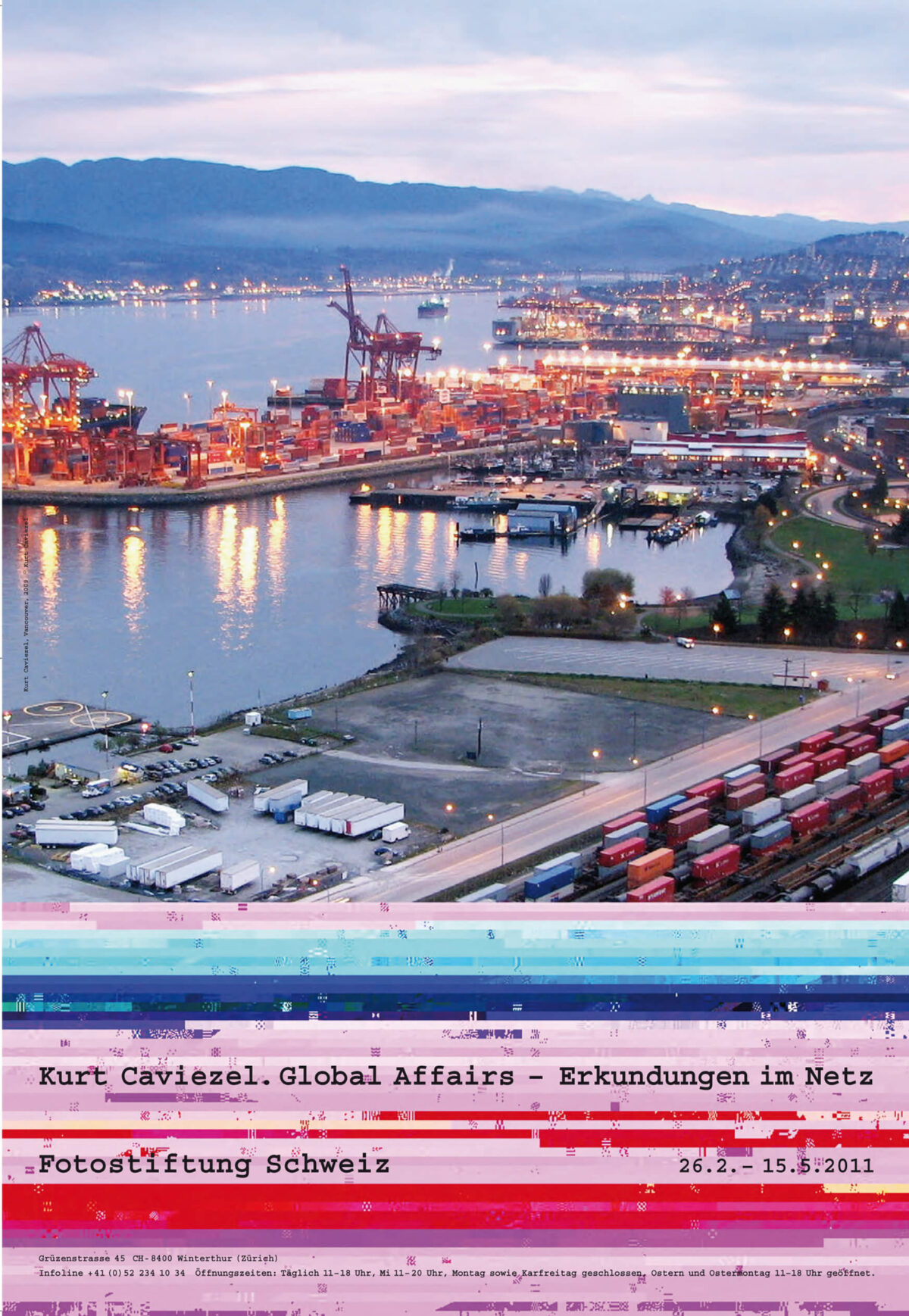Kurt Caviezel: Global Affairs – Explorations in the Net
Kurt Caviezel: Global Affairs – Explorations in the Net

“Suddenly the camera has a thousand eyes. Lenses interconnect and become a single constantly photographing camera; the screen at home is the viewfinder, the mouse is the catcher, the webcam the optical device.” (Kurt Caviezel)
Kurt Caviezel, born in Chur in 1964, photographs the world using publicly accessible webcams. So he does not operate like a conventional photographer – in a particular place with a camera at his eye ready to capture that “decisive moment” in the flow of real events. Instead he sits at home at his computer, “strolls” per mouse click through the whole internet and collects images that appear briefly on his screen before being overwritten again by subsequent images. These images are from all realms of life, between the normally protected (by one’s own four walls) private sphere and the exterior spaces surveyed for security reasons by cameras; foreseeable images as well as totally surprising images. What Kurt Caviezel observes on his screen and stores on the hard disc of his computer are excerpts from an infinite flood of images produced by thousands of webcams distributed all over the globe. That flow suggests a global perspective and pretends to illuminate all corners of the earth, but the image of the world it actually provides is merely fragmentary, sometimes at a time lag and with quite a number of image disturbances.
Even though Kurt Caviezel has himself never been to the places where these webcam images were taken, the works in the exhibition still display his distinctive artistic handwriting. Caviezel works as an assembler, so to speak, of a world found as an image, not unlike those artists in the 1920s who created new pictorial worlds out of “found images” in printed mass media. He confronts us with a selection of individual images as tableaus, and with larger serial work groups on themes such as everyday life (from cleaning, eating, smoking to yawning and sleeping), the portrait and the self-portrait (at home in front of the computer or as a shadow of the webcam itself), street photography (traffic control), reportage (“on the road” in America), animal depictions (from the fish in the shop window to the stag on the bed) and surveillance. These are mixed with individual messages (such as “Hello Zottel” or “Miss you”) and impaired by electronic transmission errors which become superimposed on the mediated perception of the world as a “nice muddle” (Caviezel) and take on an irksome life of their own.
As a counterpoint to these deliberately placed stills, Caviezel shows a series of moving sequences as video projections in which he alienates pictorial and temporal spaces that are familiar to us, reducing them to absurdity. Stylistic tools such as fast motion, cross fading, hard cuts or epic lengthening cause, for example, icicles to dance, an endless illustrated story to rotate around a red car, the elegant hovering of a cable car to be reduced to a jerky movement up and down, or a floral curtain to just about perceptibly sway in the breeze. The viewer is immediately mesmerised by an almost dizzying panopticon of webcam images – classically mounted out of individual images.
Kurt Caviezel’s ingenious selection, assembly and presentation strategies indicate that hidden in the images downloaded from the internet is a sometimes surreal or even subversive aesthetic potential that questions new ways of producing and of consuming images, be it on the internet or in an exhibition. Additionally they playfully reflect our current human condition in the paradoxical field of tension between exhibitionism and surveillance.
Exhibition poster Kurt Caviezel: Global Affairs, 89.5 x 128 cm.